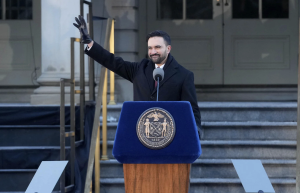They mill anxiously about the narrow hallway adjacent to the locker room, dim, orange-yellow light illuminating helmets, bent, tape-bound sticks gripped in clenched hands, eyes staring intently at the laces of skates, some swaying almost imperceptibly, muttering to themselves a steady stream of nearly formless invocations under their breath, still others pacing, barking encouraging words and pounding teammates on shoulder pads, tapping shin guards with stick blades. In the stands, seats slowly begin to fill as the newly minted home crowd streams into the rink, making space along the frigid rows of benches, huddling together and blowing clouded air into cupped hands for warmth as they peer out expectantly onto the unblemished sheet of ice, bright and reflective, covered with a fresh sheen of moisture, crystallizing, like the moment, into brittle, sparkling clarity.
In that corridor just off the ice, just out of view, the players crowd, their eyes sharp, their energy coming into focus. Only these nerves, this simmering vitality - it's not just for themselves, not just for the fans, easing into slowly warming seats, not just for the game at hand.
It's also for those who will come after.
The generations, whose potential livelihoods as professional athletes rest with the speed of their skates and the deftness of their sticks. With the power of their checks and in their willingness to do the dirty work in the corners and along the boards, to dig pucks out and clear the crease, to fight for every inch of ice, to fight for second chances in front of the net - because for themselves and for those future athletes, there may be no second chances. This is their opportunity for creating a lasting space, a hand-stitched seam from the thread of their blood, their sweat, their triumphs and losses, in the fabric of the cultural consciousness, not only for themselves, not only for the here and now, but for those untold future generations to come.
These athletes, these hockey players, bursting with barely contained dynamism in the doorway of a rink here in the far-flung reaches of Brooklyn's Dead Horse Bay, a rink eerily similar to all the other rinks they've ever known, known since they were five, six years old, shuffle closer and closer to the ice, drawn ever forward by the pull of the game they love.
These are the New York Riveters.
And they're the first ladies of America's professional women's ice hockey league.
***
© 2026 HNGN, All rights reserved. Do not reproduce without permission.








